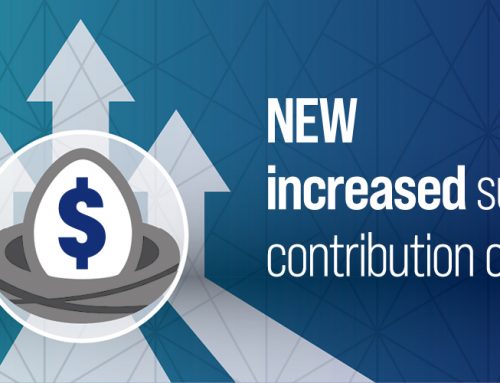If you’ve recently blown out 60 candles on your birthday cake, you’ll be feeling worried about the impact of the Covid-19 economic crisis on your retirement savings. The 20% ASX decline in March may even have given you the kind of stomach-churning drop that comes with driving over a hill crest.
But even as you watch the value of your super and investments erode, believe it or not you still have time – and history – on your side.

Does retirement mean moving to the ‘safety’ of cash?
With the average Australian’s life expectancy at 83.5 – and many of us are living well beyond that – one of the central goals of retirement planning is to make your money last as long as you. Taking a more conservative approach after you have collected your gold watch does not necessarily mean fleeing to the ‘safety’ of cash.
Talk about erosion. The measly current return and the impact of inflation on cash will find you with too many years left at the end of the money quicker than you anticipated. So, it makes sense that the market will continue to be a source of income as you move through the stages of retirement.
They key idea here is tapering to ensure that you have the cash you need to live today while still planning for tomorrow.
Time is still your friend
To really understand why your relationship with the market lasts longer than you think, you have to understand the three pillars of building wealth in the market: money, time and return. And since you are no longer tipping money into your investments– does it really make sense to remove the other two?
Hardly. Without drawing an income from work, you are going to need your money working every bit as hard as it did in the lead up to retirement. Taking the long-term view is every bit as important when you are 65, because let’s face it, retiring can be expensive and long.
Active and passive retirement
As you move through the stages of retirement your financial needs change. Holidays give way to hobbies which give way to home care. And while there are broadly two stages to the retirement journey – active and passive with a few shades in between – it really comes down to your individual needs and how your health holds up.
Let’s talk about funding the active stage and that means travel, cars and renovations. Planning on rewarding all your hard work with that long-waited Europe holiday or joining the grey nomads pulling a caravan on the back of a new Pajero? Go on, you deserve it.
But how you fund it can make all the difference in later years. Ask yourself this? Is it wise to take a chunk of your compounded capital at the beginning of your retirement to fund your escape, renovations or a new set of wheels? Taking a long-term view might mean funding those sweeteners out of your last few years of work, or tapering into retirement with a part time job or consultancy.
As your health declines, you enter the passive years of retirement. The passive years of retirement typically means spending less money and more time at home. But the travel costs are often offset by health and in-home care expenses.
When it comes to your investments, it’s all about rebalancing. As you move through your retirement years, you may reduce your exposure to the market as time becomes of less importance and a serious health issue has meant that the rainy day you’ve been saving for has arrived.
Our money needs are as diverse as our individual retirement dreams. That is why starting a conversation with a planner about your retirement can help you enjoy the most important asset you have: time.





